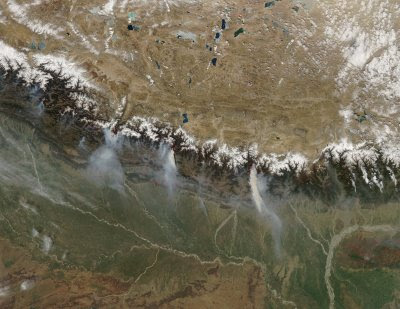Ice-capped roof of world turns to desert
Scientists warn of ecological catastrophe across Asia as glaciers melt and continent’s great rivers dry up 
By Geoffrey Lean, Environment Editor, Sunday, 7 May 2006 Global warming is rapidly melting the ice-bound roof of the world, and turning it into desert, leading scientists have revealed. The Chinese Academy of Sciences – the country’s top scientific body – has announced that the glaciers of the Tibetan plateau are vanishing so fast that they will be reduced by 50 per cent every decade. Each year enough water permanently melts from them to fill the entire Yellow River. They added that the vast environmental changes brought about by the process will increase droughts and sandstorms over the rest of the country, and devastate many of the world’s greatest rivers, in what experts warn will be an “ecological catastrophe”. The plateau, says the academy, has a staggering 46,298 glaciers, covering almost 60,000 square miles. At an average height of 13,000 feet above sea level, they make up the largest area of ice outside the polar regions, nearly a sixth of the world’s total. The glaciers have been receding over the past four decades, as the world has gradually warmed up, but the process has now accelerated alarmingly. Average temperatures in Tibet have risen by 2 degrees Fahrenheit over the past 20 years, causing the glaciers to shrink by 7 per cent a year, which means that they will halve every 10 years. Prof Dong Guangrong, speaking for the academy – after a study analysing data from 680 weather stations scattered across the country – said that the rising temperatures would thaw out the tundra of the plateau, turning it into desert. He added: “The melting glaciers will ultimately trigger more droughts, expand desertification and increase sand storms.” The water running off the plateau is increasing soil erosion and so allowing the deserts to spread. … Yao Tandong, head of the academy’s Qinghai-Tibet Plateau Research Institute, summed it up. “The full-scale glacier shrinkage in the plateau regions will eventually lead to an ecological catastrophe,” he said.